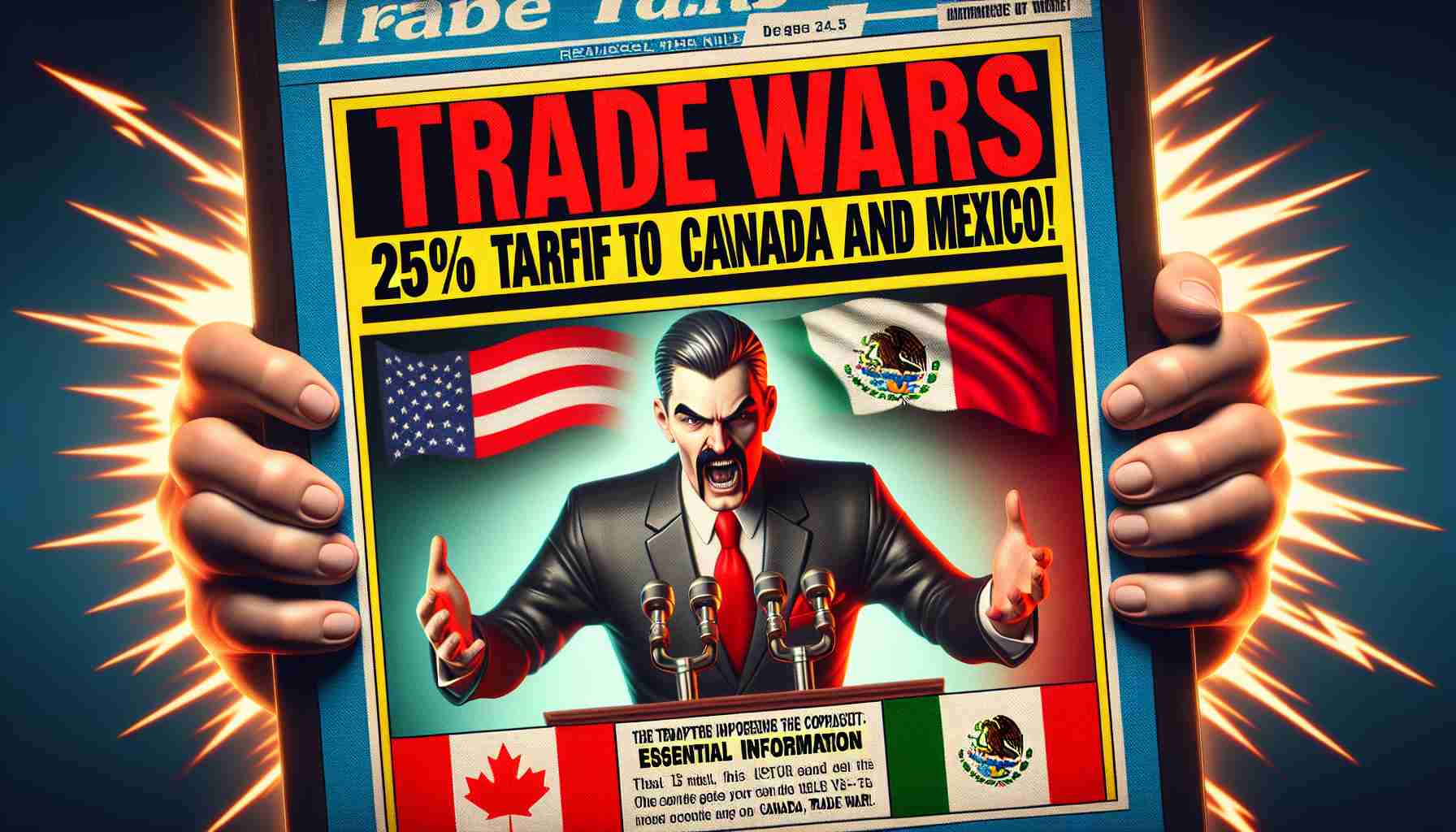- Trump’s 25% tariff on Canadian and Mexican products marks a significant shift in North American trade policy.
- Retaliatory tariffs from Mexico and Canada indicate potential for escalating trade tensions.
- The tariffs are framed as necessary for national security, responding to drug-related issues.
- Political leaders are strategizing responses, reflecting the interconnected nature of international relations.
- The situation emphasizes the importance of monitoring economic developments that could affect consumers and businesses.
- Implications for future trade agreements are profound, highlighting the volatility of current geopolitical dynamics.
In a bold move that could reshape North American trade, former President Donald Trump unleashed a wave of economic turbulence, imposing a staggering 25% tariff on products from Canada and Mexico. Effective February 4, this new policy, which avoids hydrocarbons taxed at 10%, aims to counter what Trump describes as a drugs-and-migration crisis spilling over from these neighboring nations.
While the U.S. market braced for impact, political leaders reacted swiftly. The President of Mexico and the Prime Minister of Canada vowed to retaliate with tariffs of their own on American goods, while Beijing condemned the taxes, threatening corresponding measures. This tit-for-tat escalates tensions, raising questions about economic stability across the continent.
Trump’s justification for these tariffs lies in a dramatic narrative of national security, invoking the International Emergency Economic Powers Act. He claims that the fentanyl crisis, largely fueled by drug cartels in Mexico and lax enforcement in Canada, necessitates immediate action. He insists this policy, harsh as it may seem, is crucial for protecting American lives from the scourge of illegal drugs that have claimed countless victims.
As countries huddle to strategize their next moves, the European Union warns of a firm response should they find themselves in Trump’s crosshairs. The stakes are high, illustrating how trade agreements can pivot dramatically, affecting lives and economies.
The core takeaway? This unfolding trade war signals significant shifts in international relations that could impact consumers and businesses alike. Keep an eye on how this economic drama unfolds!
Trade Turbulence: How Trump’s Tariff Could Change North American Relations Forever!
Overview of the New Tariff Policy
Former President Donald Trump has initiated a contentious economic policy by imposing a 25% tariff on goods imported from Canada and Mexico starting February 4. This significant move, which excludes hydrocarbons subject to a 10% tax, is suggested to be a strategic response to the rising issues of drug trafficking and migration perceived as crises originating from these neighboring countries.
The backdrop to this action is the assertion by Trump that the fentanyl crisis—a public health emergency largely fueled by drug cartels in Mexico—necessitates strict trade measures to protect American lives. This justification for the tariffs invokes the International Emergency Economic Powers Act, showcasing the president’s view of a national security threat.
Insights and Implications
1. Market Forecasts
Economists predict an immediate disruption in various sectors, especially those reliant on cross-border trade. Industries such as agriculture, manufacturing, and automotive may bear the brunt as costs rise, leading to increased consumer prices.
2. Pros and Cons
– Pros:
– Increased domestic production as companies may look to source more materials locally or in different countries.
– A potential decline in drug trafficking volumes as prices increase due to tariffs on related products.
– Cons:
– Escalating tensions with two of the U.S.’s largest trading partners could lead to broader economic repercussions.
– Consumers face potential price hikes on everyday goods, resulting in inflationary pressure.
3. Controversies
The decision has ignited debates about its efficacy and potential consequences. Critics argue that it may not effectively target the root causes of drug trafficking or migration while exacerbating relations with essential trade partners. Analyses suggest that retaliatory measures may further deepen the economic divide and foster an unfriendly trade environment.
Key Questions and Answers
Q1: What types of goods will be affected by the new tariffs?
A1: The 25% tariff applies broadly to goods imported from Canada and Mexico but specifically excludes hydrocarbons, which are subjected to a 10% tax. This means a variety of consumer goods, industrial products, and other imports from these countries could see increased costs.
Q2: How are Canada and Mexico responding to the tariffs?
A2: Political leaders in both Mexico and Canada have pledged to retaliate with their own tariffs on American goods, creating a potential cycle of escalating trade barriers that could harm economies on both sides of the border.
Q3: What long-term effects might these tariffs have on U.S. consumers?
A3: If the tariffs remain in place and lead to retaliatory actions, U.S. consumers could experience higher prices on imported goods, reduced product diversity, and potential job losses in sectors heavily dependent on trade with Canada and Mexico.
Final Thoughts
The unfolding trade war illustrates not only the complexity of international relations but also the far-reaching implications these decisions have on everyday lives and economies. Businesses should brace for changes, and consumers should stay informed on how these economic shifts will impact purchasing power and market dynamics.
For more insights on trade and economic policies, visit CNBC.
